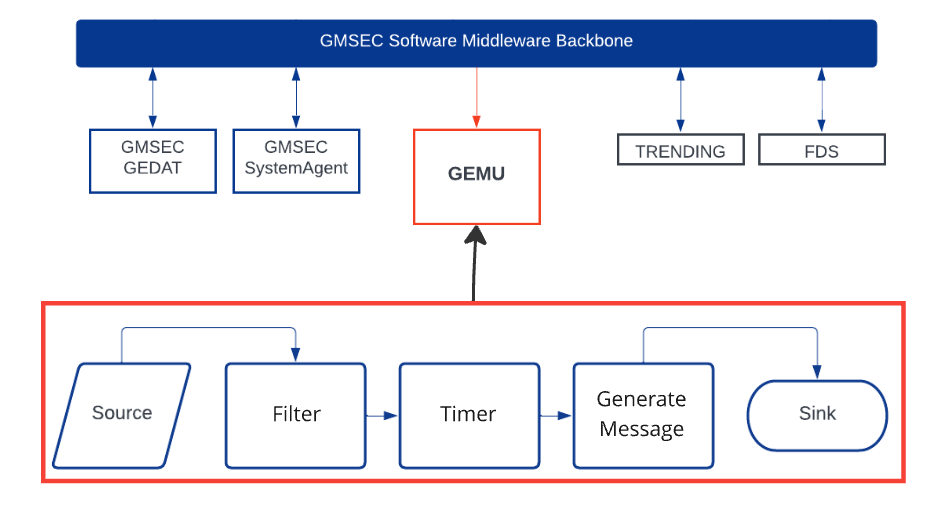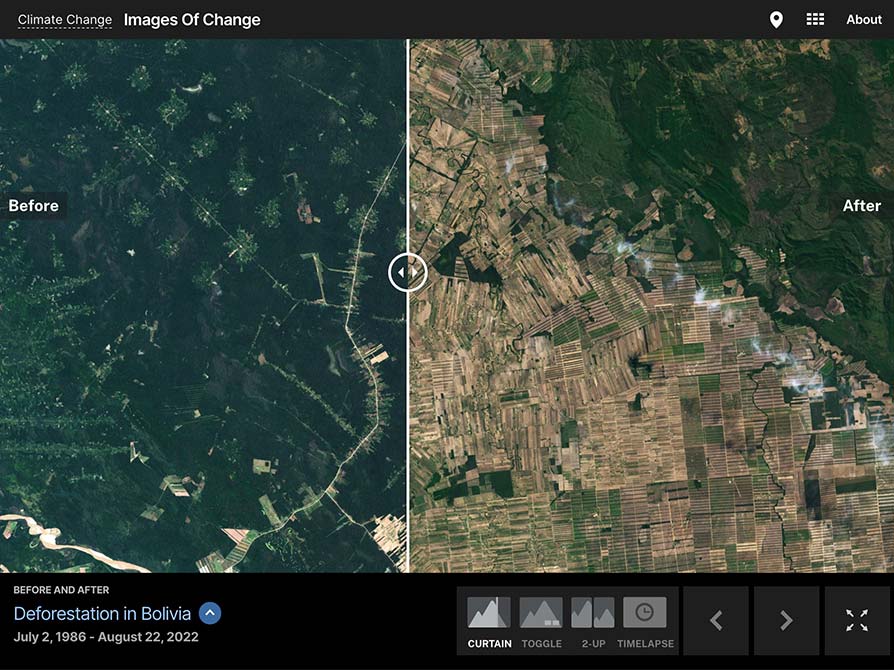
GMSEC Components
Providing Mission Operations Center Situational Awareness and rapid GMSEC-Compliant component development
Legacy components
Components under active development
Active Development
The Generic Extensible Messaging Utility and the updated GMSEC Services Suite are both GMSEC-compliant software applications currently under active development within the Goddard Mission Services Evolution Center.
Empowers users to create custom GMSEC components
GEMU is a software application that provides a user with the means to link a set of functional nodes to construct custom data processing pipelines. GEMU nodes are comprised of Sources, Sinks, Filters, Actions, and Timers. For GEMU purposes, data equates to some for of C2MS messages. The objective of GEMU is to enable the rapid development of custom GMSEC-compliant applications. The combination of sources, sinks, and processing nodes, using a custom Domain Specific Language (DSL) creates custom component behavior. Instead of building a custom component, a custom configuration is built. Each mission produces a unique data set and therefore has unique data processing needs. The focus is on data and data processing.

A new GMSEC in-browser experience, built with OpenMCT from Ames Research Center
GSS Services Suite of Tools consist of GSS Portal, GSS Atlas and EAGLE. GSS-Portal is a web portal that allows users to monitor system-wide data from a centralized location, create customized views, modify service configurations, and access a growing ecosystem of widgets and documents. GSS-Atlas captures GMSEC messages and forwards them from the server to the client side GSS-Portal. In addition, the EAGLE component is a GMSEC service that pulls GMSEC messages from the middleware server and archives them to the database. These archived messages can be viewed with the GSS-Portal application if desired.

Legacy Components
GMSEC maintains 15+ legacy components providing alerts, automation, real-time telemetry monitoring, storing messages to databases, and more. To send an inquiry about a specific component, click the arrow next to the component description.

Alert Notification System Router (ANSR)
ANSR is an alert system that autonomously pages or emails mission operators in case of events or anomalies during lights-out satellite operations. Although ANSR does not detect events or determine how to respond to them, other components can instruct ANSR to page an operator or a team through GMSEC directives.

EAGLE
EAGLE is an archiving service for storing messages published to the middleware bus into a database. Messages are defined in the Object Management Group Command and Control Message Specification document and the NASA Addendum to that specification. EAGLE supports the Elasticsearch data store, the Kibana web interface, MySQL/MariaDB relational databases and will soon support NoSQL database via MongoDB.

GMSEC Environmental Diagnostic Analysis Tool (GEDAT)
GEDAT offers a centralized visual representation of a GMSEC-based system. It identifies all components connected to the bus, validates nominal operations, and recognizes error conditions. GEDAT monitors heartbeat messages to identify and display the status of components communicating via publish/subscribe messaging.

Performance Test Utility (PTU)
PTU collects message timing data based on GMSEC message activity, analyzes it, and presents results in an easy-to-read format. It allows users to create and modify performance tests, automate general-purpose performance testing, and analyze direct socket-to-socket connections on the same network for latency comparison.

Room Alert Adaptor (RAA)
RAA allows users to set up an environmental monitoring system using GMSEC-compliant components. RAA can be used as a system service or run in the background. Other GMSEC-compliant components, such as GEDAT and CAT can be integrated with RAA for centralized display and automation of tasks associated with the status monitoring.

System Agent (SA)
SystemAgent supplies health information of the computer hosting the agent to other GMSEC components using a middleware-based architecture. Traditionally, early problem detection and error correction of a machine required physical presence for system monitoring. Having an agent that reports machine’s health using the middleware paradigm offers a generic, automated, and centralized monitoring tool for the entire GMSEC system.

XTCE Read and Edit (XRAE)
XRAE allows users to view XTCE files in a human-readable form and partially edit them. The viewing capabilities of XRAE encompass most features of XTCE 1.0, displaying them in a user-friendly and high-level format. The editing features allow to modify some characteristics of SpaceSystem, Parameter, and ParameterTypes.





































